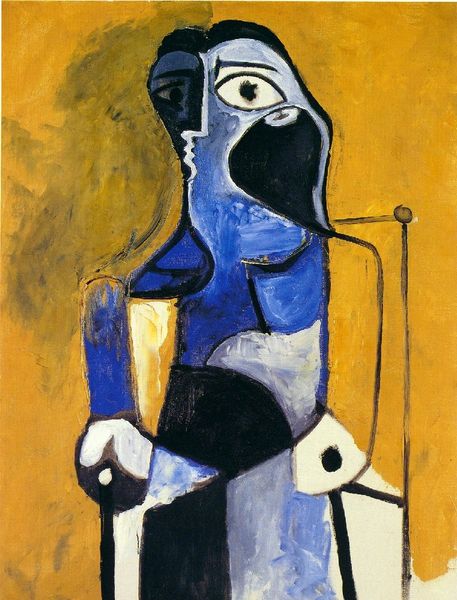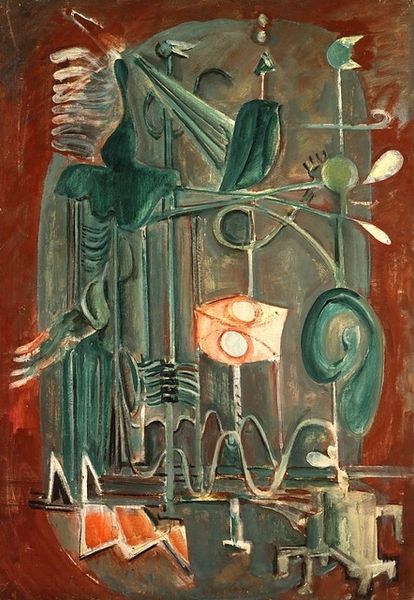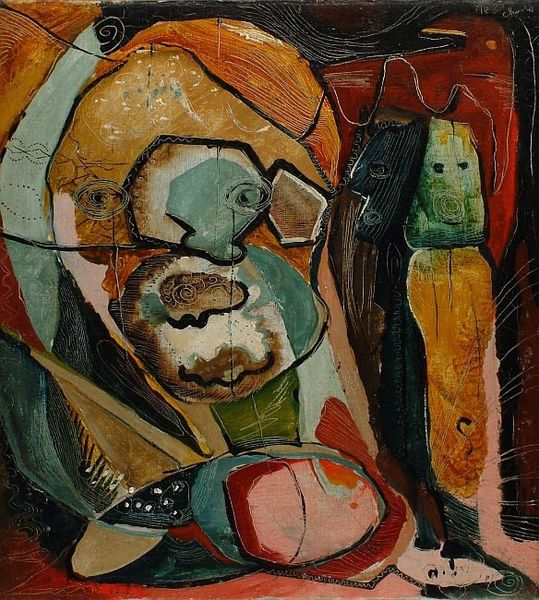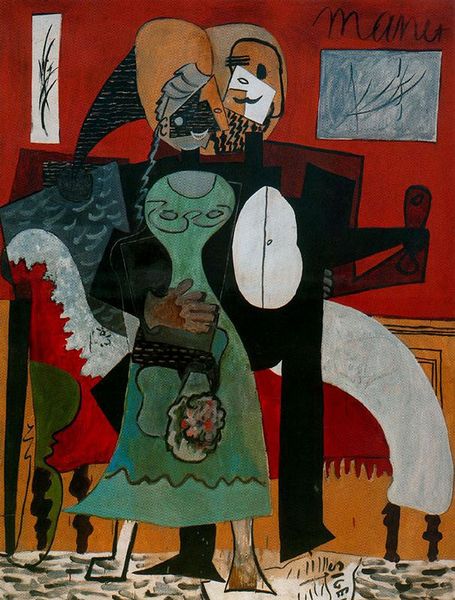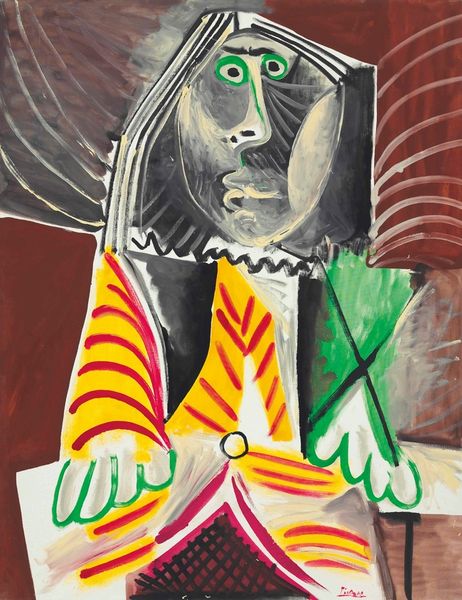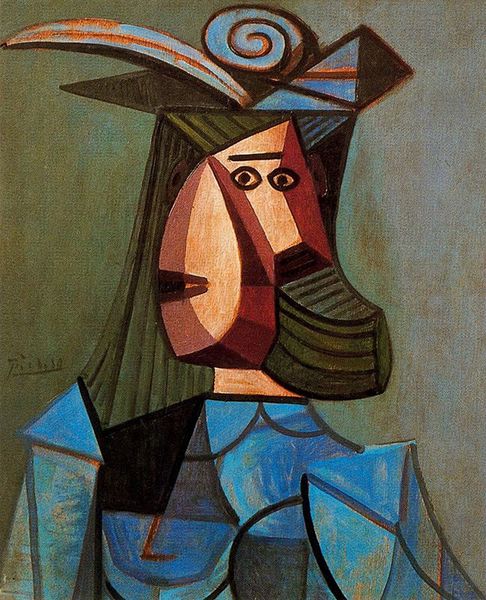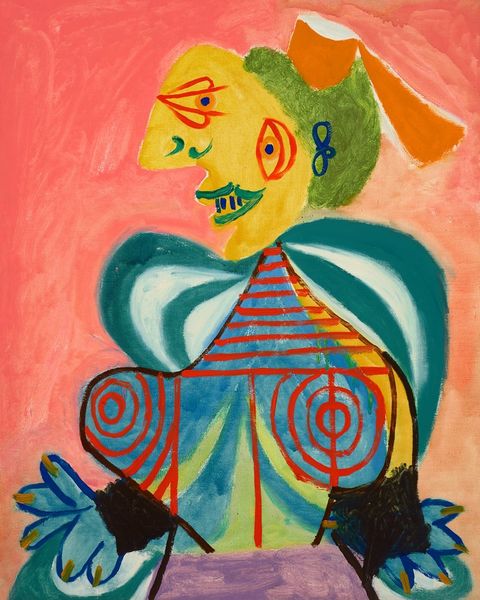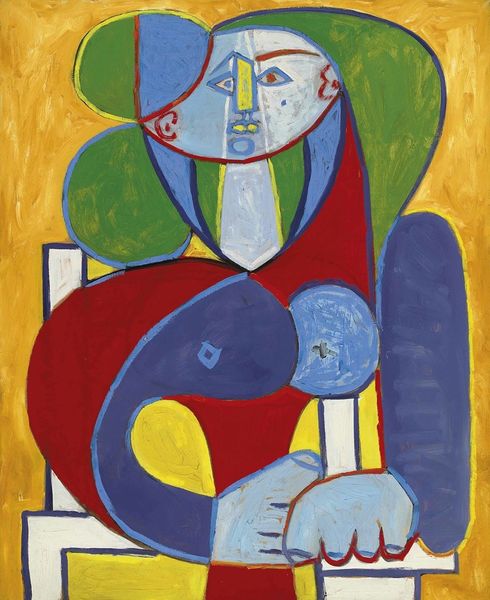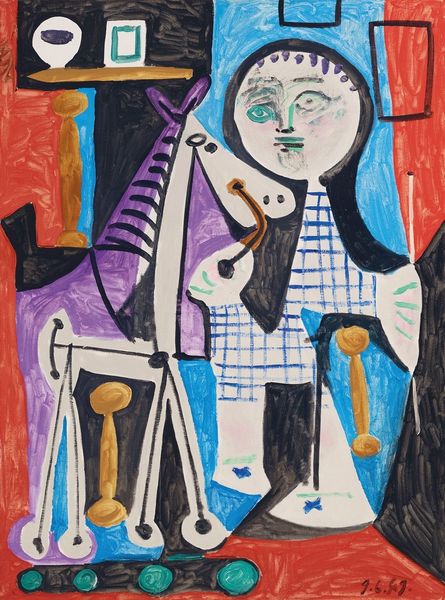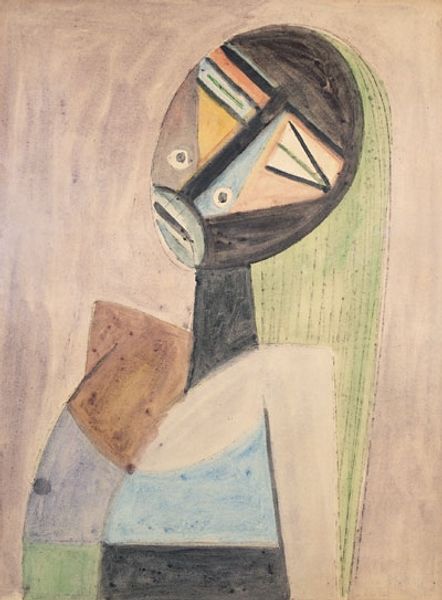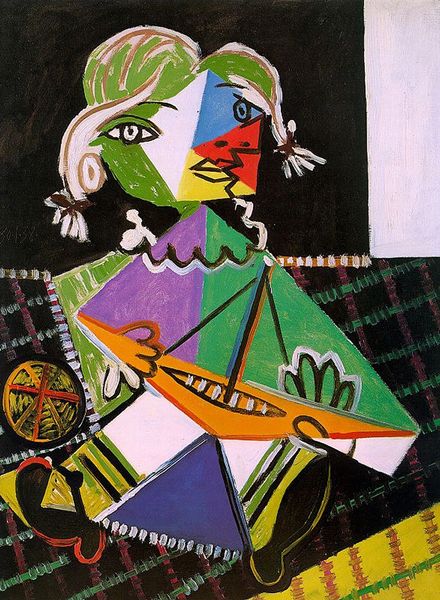
Copyright: Public Domain: Artvee
Curator: Here we have Picasso’s “Femme dans un fauteuil,” painted in 1942. It’s an oil on canvas portrait, showcasing his distinctive cubist style. Editor: My first thought is fragmentation. It's unsettling to see a figure broken down into such geometric shapes and contrasting colors, like shards of glass. The raw texture of the oil paint seems heightened somehow. Curator: Yes, it definitely plays with visual dismemberment. Consider how Picasso manipulates the conventional portrait. The woman's face, with those wide, tear-like markings beneath the eyes, becomes almost mask-like, invoking primal emotions. Does the figure carry a burden of collective grief during wartime? Editor: Absolutely. The choice of materials—oil paint, a relatively accessible medium—signals to me a certain intention. By using these readily available supplies, Picasso democratizes the depiction of sorrow. The way he builds up layers and layers of paint, almost violently in some areas, speaks to me of the intense emotional labor. Curator: Note the flattened perspective, too. The fracturing creates psychological distance. Perhaps he is using cubism here to portray not just the physical appearance of the subject, but her interior state, fragmented by trauma and turmoil, not necessarily individual but perhaps social. The green hat might be a subtle symbol of resilience? Editor: And it's not just emotional, it feels political as well. Picasso made a deliberate choice not to use expensive or luxurious materials during that particular era of strife. It's as if the very act of making becomes a commentary. Curator: Thinking about the era’s visual language of propaganda and coded signs, do you find those same strategies playing out in Picasso's art of the time? It's an intriguing interpretation given the historical backdrop, using art to signify resistance without saying a single, obvious thing. Editor: Examining Picasso’s use of the materials helps us see a direct link to social experience, it shows the artistic choice to embrace materials available in the war climate. We can analyze the work on a personal or even societal level. Curator: A deeply potent piece that merges emotional turmoil with artistic expression. Editor: Precisely. An honest and potent demonstration of labor and art.
Comments
No comments
Be the first to comment and join the conversation on the ultimate creative platform.
